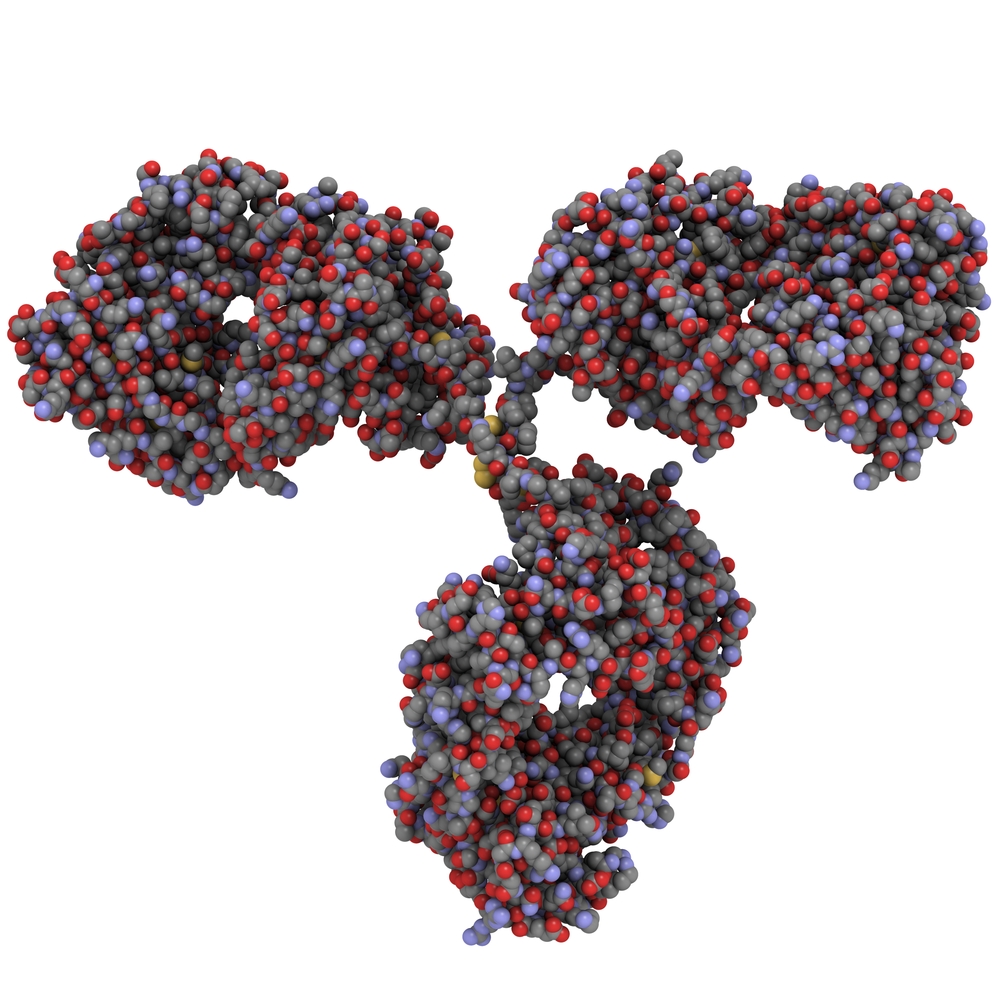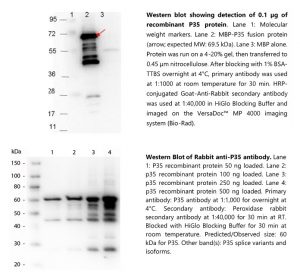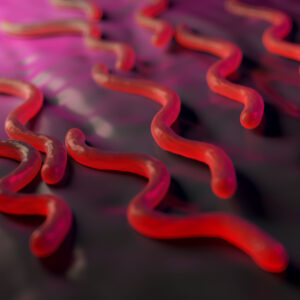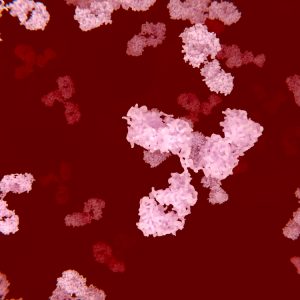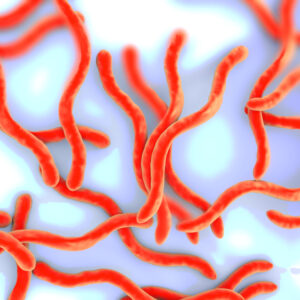Western blot showing detection of of recombinant P35 protein. Protein was run on a 4-20% gel, then transferred to nitrocellulose. After blocking overnight at 4°C, primary antibody was used at 1:1000. HRP-conjugated Goat-Anti-Rabbit secondary antibody was used at 1:40,000 in HiGlo Blocking Buffer and imaged on the VersaDoc™ MP 4000 imaging system (Bio-Rad).
Rabbit Anti-Borrelia burgdorferi sensu stricto (B31) P35 Antibody
$308.48 – $1,057.63 excl. VAT
Rabbit Anti-Borrelia Burgdorferi P35 antibody is a polyclonal recognising Borrelia burgdorferi sensu stricto. The antibody is suitable for use in ELISA and Western blotting applications.
RABBIT ANTI-BORRELIA BURGDORFERI SENSU STRICTO (B31) P35 ANTIBODY
Anti-Borrelia burgdorferi P35 antibody is a polyclonal antibody, prepared against P35 from the spirochete B. burgdorferi, for use in ELISA and Western blotting applications.
PRODUCT DETAILS – RABBIT ANTI-BORRELIA BURGDORFERI SENSU STRICTO (B31) P35 ANTIBODY
- Rabbit anti-B. burgdorferi sensu stricto P35 polyclonal IgG antibody (strain B31).
- Greater than 95% purity by SDS-PAGE
- Buffered in 0.02 M Potassium Phosphate, 0.15 M Sodium Chloride, pH 7.2.
BACKGROUND
Strain B31 is the type strain (ATCC 35210) for this organism and was derived by limited dilutional cloning from the original Lyme-disease tick isolate obtained by A. Barbour (Johnson, et al., 1984).
The bba64 gene of Borrelia burgdorferi encodes a surface-exposed lipoprotein, called P35. The 35-kDa antigen has been shown to be a statistically significant marker in IgG immunoblots in a study of patients with early Lyme disease who presented with erythema migrans (Fikrig, et al., 1997).
P35 expression is induced in the tick vector during feeding and maintained during infection of the vertebrate host. The expression of a majority of the proteins expressed in early Lyme disease is affected by pH, being abundantly expressed at pH 7.0 (resembling the tick mid-gut pH of 6.8 during feeding) but only sparsely at pH 8.0 (a condition closer to that of the unfed tick mid-gut pH of 7.4) and the encoding genes may be coregulated (Gilmore Jr, et al., 2010). Borrelia may also change its antigenic composition in its need for adaptation to stresses imposed by changes in conditions from cycling between its arthropod and mammalian hosts (Fikrig, et al., 1997).
The expression of bba64 is down-regulated in the absence of RpoS which has also been shown to be the sole determinant of differential bba64 expression in cultured spirochetes. P35 expression in B. burgdorferi is upregulated in the stationary growth phase, and influenced by a temperature of 34°C (but not 24°C) (Gautam, et al., 2008).
REFERENCES
- Fikrig, E. et al., 1997. Borrelia burgdorferi p35 and p37 proteins, expressed in vivo, elicit protective immunity. Immunity, 6(5), pp. 531-9.
- Gautam, A., Hathaway, M., McClain, N. & Ramesh, G., 2008. Analysis of the determinants of bba64 (P35) gene expression in Borrelia burgdorferi using a gfp reporter. Microbiology, 154(275-285).
- Gilmore Jr, R. D., Howison, R. R., Dietrich, G. & Patton, T. G., 2010. The bba64 gene of Borrelia burgdorferi, the Lyme disease agent, is critical for mammalian infection via tick bite transmission. PNAS, 107(16), pp. 7515-7520.

